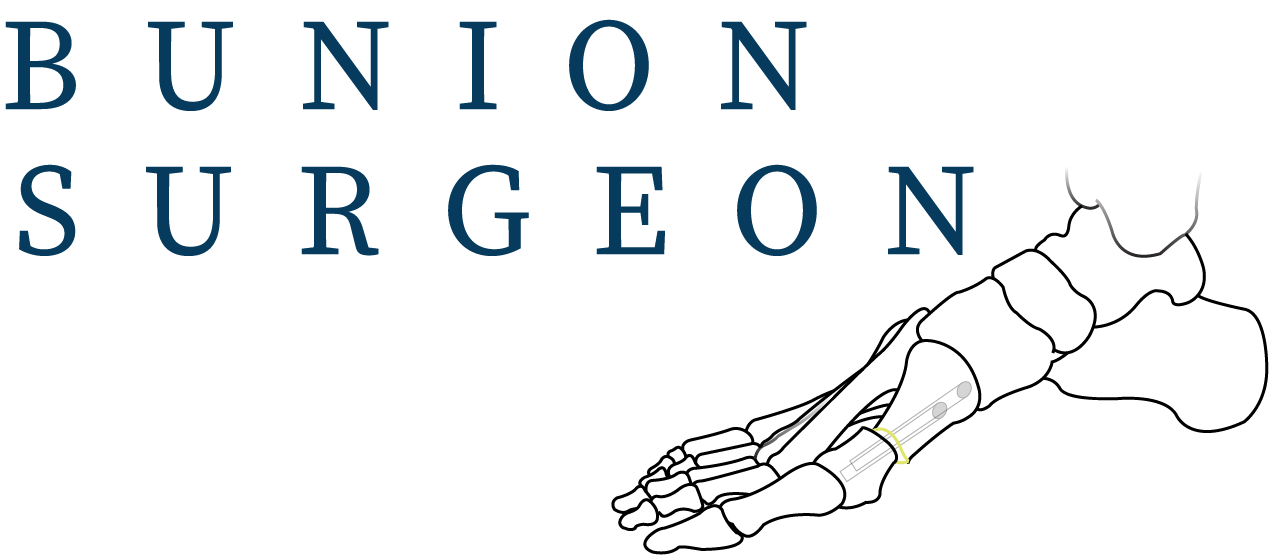

Minimally Invasive Keyhole Bunion Surgery
Date published: 2023-10-04
In this blog you will find an overview of minimally invasive keyhole bunion surgery, provided by Consultant Podiatric Surgeon, Mr Kaser Nazir.

What is a Bunion?
When the pain in your big toe joint becomes so severe that it affects your daily life, keyhole bunion surgery may be the best solution. Bunion surgery, also known as hallux valgus correction, is a medical procedure used to treat a deformity of the big toe joint, commonly referred to as a bunion. This condition is caused by the shifting of the long bone of the big toe, known as the first metatarsal, away from the second metatarsal. As this joint shifts, the soft tissue around it becomes inflamed and painful, and a bony protrusion forms on the side of the foot.
What is Keyhole Bunion Surgery?
Keyhole bunion surgery is a minimally invasive procedure used to correct the deformity of the big toe joint and relieve the associated pain. It is used for mild to moderate bunions, as it does not involve cutting or removing any bone. Instead, the surgeon makes small incisions in the skin and inserts tiny instruments to reposition the bones and ligaments. The result is a straighter big toe joint, with less pain and a more natural look.
What are the Risks Involved in Keyhole Bunion Surgery?
Before undergoing keyhole bunion surgery, you should be aware of the risks associated with the procedure. These include infection, nerve damage, and recurrence of the deformity. You should also talk to your doctor about the potential benefits and the expected recovery time.
How Long Does Keyhole Bunion Surgery Take?
Typically, keyhole bunion surgery takes about 30 minutes to complete. During the procedure, the surgeon will make small incisions in the skin, usually between 1 and 3 millimeters in size. Next, the surgeon will insert a camera and small instruments into the incisions to reposition the bones and ligaments of the big toe joint. The surgeon will then stitch the incisions closed.
What Happens After Keyhole Bunion Surgery?
After the surgery, you will be asked to wear a special post-operative shoe for several weeks to allow the area to heal. You will also likely need to use crutches for the first few days after surgery, as well as a walking boot for additional support. You may also need to take pain-relieving medication and keep the foot elevated for several days after the surgery.
When Will you See the Effect Following KeyHole Bunion Surgery?
Though it typically takes several months for the full benefits of keyhole bunion surgery to be seen, most patients experience a significant reduction in pain and improved mobility soon after the surgery. In addition, the procedure often provides long-term relief from the pain and discomfort associated with bunions.
Overall, keyhole bunion surgery is an effective and minimally invasive way to correct the deformity of the big toe joint and relieve the associated pain. The procedure is relatively safe and carries few risks. It can also provide long-term relief from bunion-related pain and discomfort, allowing patients to return to their normal activities with less pain and greater mobility
If you would like more information, or would like to schedule a consultation, contact our team on:
Tel: 0207 820 8007 | Email: admin@bunionsurgeon.co.uk | Address: 17 Harley Street, London, W1G 9QH
Alternatively you can view availability and book online